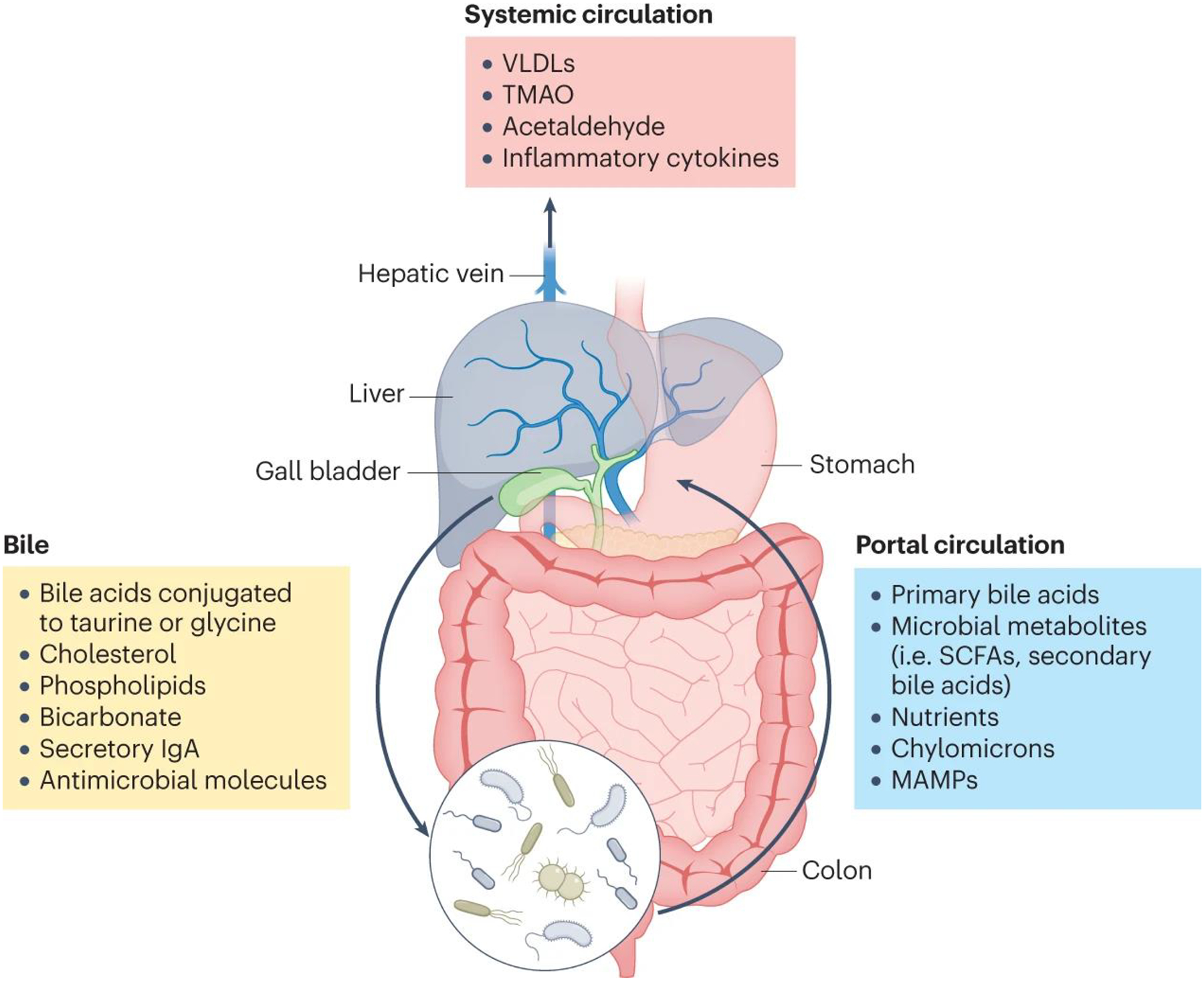Fig. 1. The gut–liver axis.

The liver produces bile, which is composed of cholesterol, phospholipids, proteins, bicarbonate, and bile acids that have been conjugated by the liver to taurine or glycine (yellow box). Bile is directed into the proximal small intestine via the bile ducts, where it aids in lipid digestion and absorption. In the colon, gut bacteria convert primary bile acids into secondary bile acids via dihydroxylation, and eventually both primary and secondary bile acids are reabsorbed back into the liver via the portal circulation (blue box). The portal circulation also carries absorbed nutrients, lipids, microbial products such as lipopolisaccharide, and microbial metabolites such as short-chain fatty acids (SCFAs) back to the liver. Toxic metabolites such as acetaldehyde and inflammatory cytokines produced by the liver then continue into the systemic circulation (red box). IgA, immunoglobulin A; SCFAs, small-chain fatty acids; MAMPs, microbe-associated molecular patterns; VLDLs, very low-density lipoproteins; TMAO, trimethylamine N-oxide.
